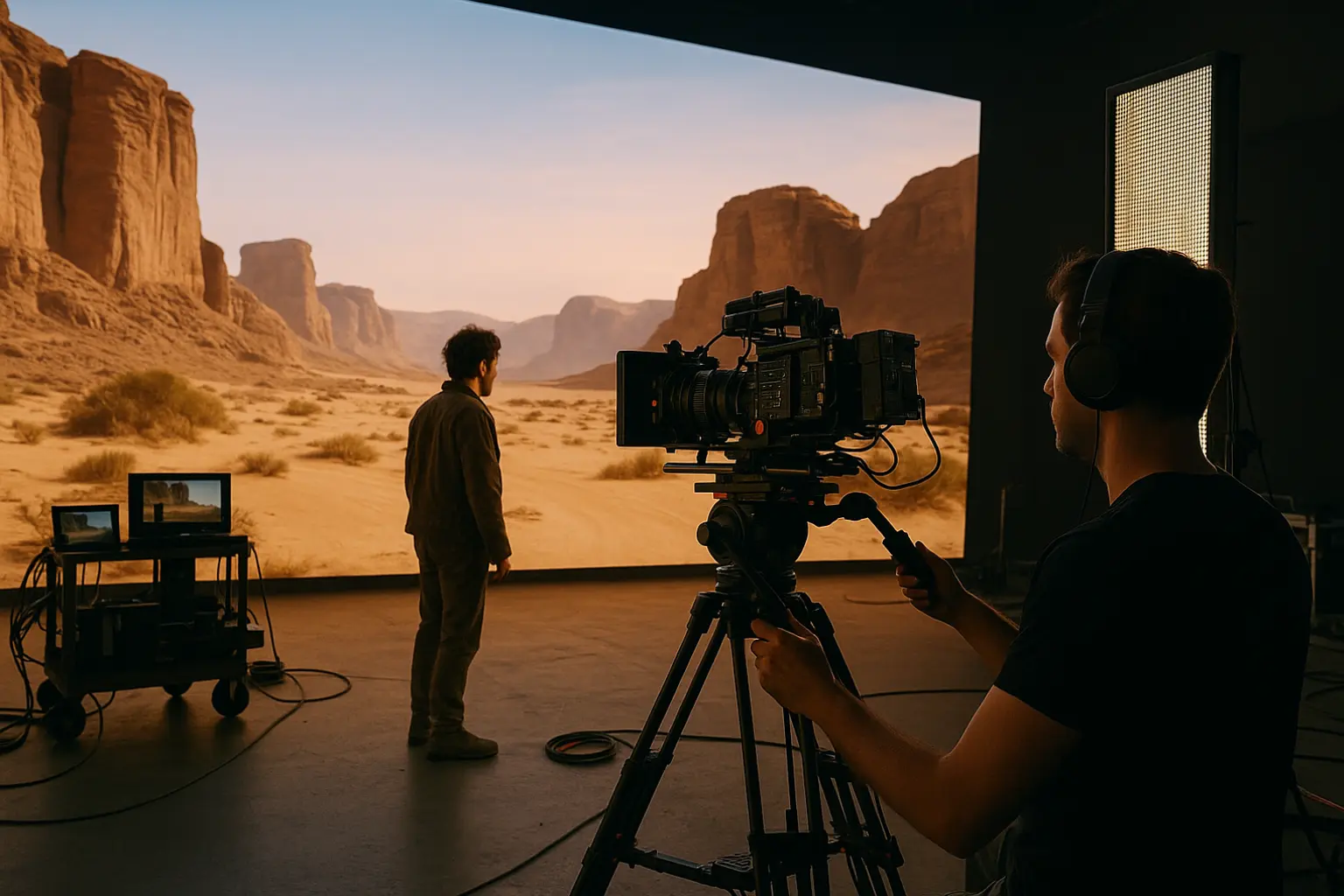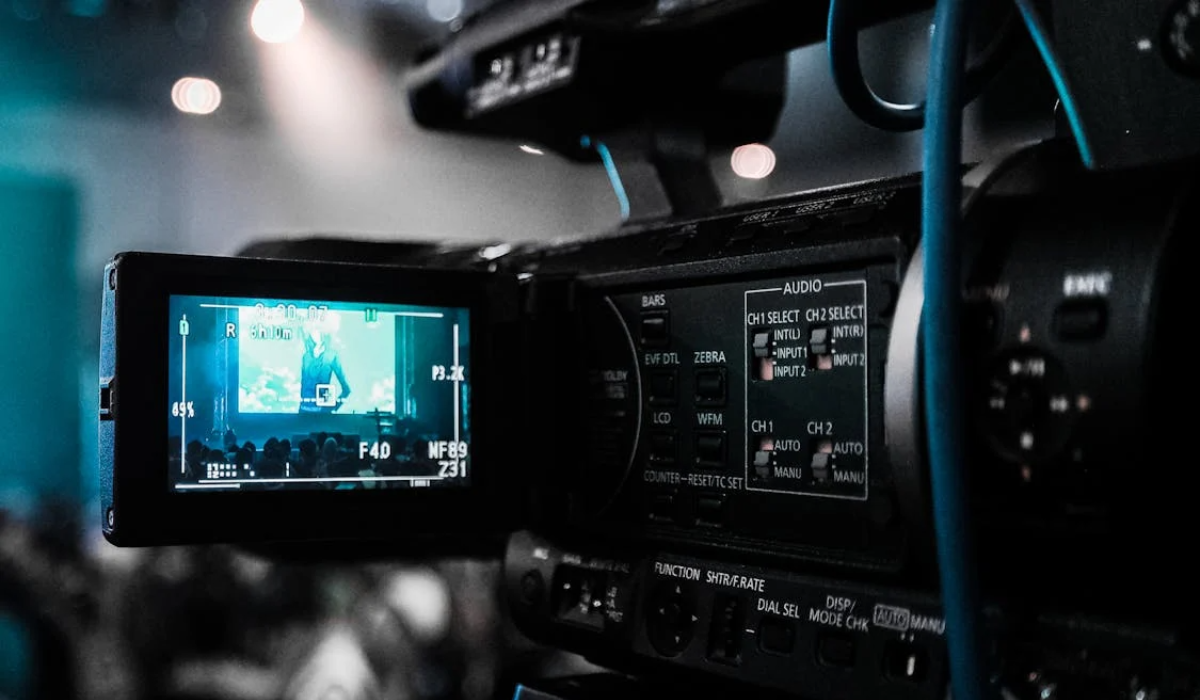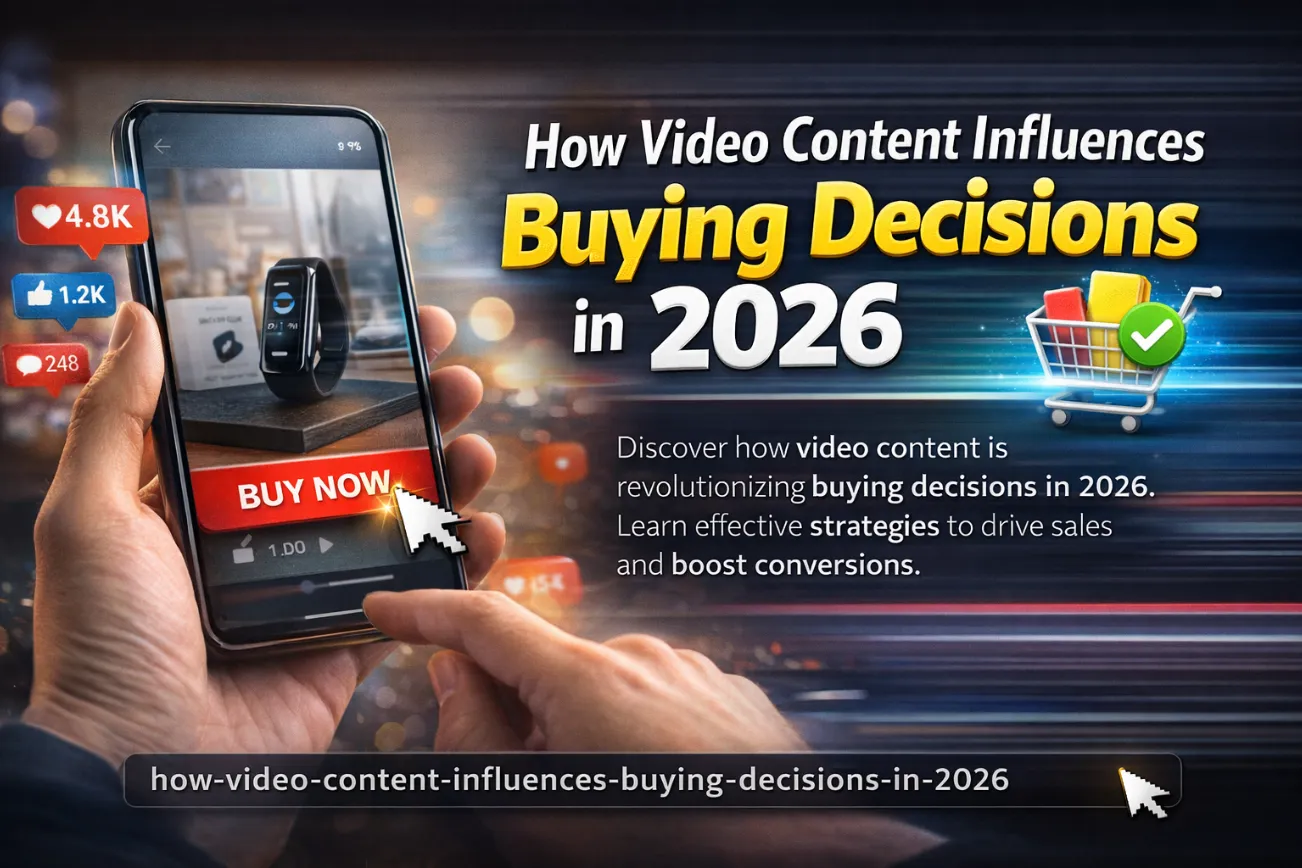How Virtual Sets Are Changing the Game for Video Production

The film industry just hit a turning point. Productions that once required weeks of international travel, million-dollar set builds, and unpredictable weather delays now happen inside climate-controlled studios with LED walls and game engines. Virtual production isn't just another filmmaking trend. It's fundamentally changing how content gets made, who can afford to make it, and what's possible to create.
If you've watched "The Mandalorian" or wondered how brands produce stunning commercials in impossible locations, you're seeing virtual production at work. The technology combines physical filming with real-time digital environments, giving creators instant visual feedback and control that traditional methods never offered. The result? Faster timelines, smaller budgets, and bigger creative possibilities.
Virtual Production Technology:
Picture this: instead of actors staring at green walls, they're surrounded by huge LED screens showing the actual background. A desert. A spaceship. A Tokyo street at night. Whatever you need.
Game engines like Unreal Engine run these backgrounds and adjust them as the camera moves. The perspective shifts naturally. Lighting reacts in real time. The LED setup includes the walls themselves, tracking cameras, rendering computers, and live color grading capabilities that let you see the finished look on set. Physical meets digital, and the gap between them basically disappears.
How Virtual Production Reduces Production Budgets
Here's what gets executives interested. "Snowfall" switched to LED stages and saved close to $50,000 every episode. Not small change.
Where the savings come from:
- Skip the location scouts and travel costs
- Don't build sets that cost a fortune and get used once
- Less post-production because you're capturing effects live
- Fewer reshoots since you see what's working right away
- Weather doesn't shut you down for days
Building a physical set for a big production? You're looking at hundreds of thousands easily. Virtual sets sit in a hard drive. Change the weather in seconds. Swap from dawn to midnight just as fast. Reuse them on different projects. The math starts making a lot of sense.
Creative Benefits: Real-Time Control for Filmmakers
This is where things get interesting beyond the budget stuff. Directors can try five different angles in the time it used to take to set up one. Change the lighting and see it happen. Tweak the background depth while everyone watches.
Actors actually perform better because they're not pretending. They see the environment. The LED walls light their faces naturally. The reflections look right. You're not spending weeks in post trying to make green screen footage look believable.
Solving Traditional Production Challenges with Virtual Sets
Anyone who's run a shoot knows what kills schedules and budgets.
What virtual production handles:
- Continuity stays perfect across different shoot days
- Weather does exactly what you want, always
- Film multiple locations in one day without moving trucks
- Test risky shots safely
- Everyone works from the same visual, fewer miscommunications
VFX people join from day one instead of inheriting problems three months later. Spot an issue? Fix it now, not in post when it costs ten times more.
Virtual Production Applications:
"The Mandalorian" made headlines, sure. But virtual production isn't just for Star Wars budgets anymore. Commercial shoots use it for product launches. Brand video content, explainer videos, and corporate video production all benefit from the technology. Music videos pull off effects that used to be out of reach.
Commercial productions see major advantages when combining virtual sets with 3D animation. Product visuals that need impossible angles or animated elements integrate seamlessly during filming rather than in post-production.
Creating Impossible Scenes with Virtual Production and VFX
Some ideas just don't exist to film. Fantasy worlds. Historical settings that are gone. Future tech that isn't built yet. Traditionally, these cost a fortune or stayed in concept art.
Virtual production opens this up. Mix it with 3D animation and VFX work, and you can show anything. The kicker is you're building it during the shoot, not trying to add it later when half the footage doesn't quite match.
Sustainable Filmmaking
Film production has a nasty carbon footprint. Moving crews around generates about half the emissions. Generators and equipment add more.
Virtual stages cut this way down. One study showed less than a tonne of carbon for virtual versus 95 tonnes for location work. That's not a typo. You're also not sending crews into fragile natural areas that can't handle the impact.
The Future of Virtual Production
LED screens keep getting better. Rendering gets faster. The tech that needed a specialist team last year? More people can handle it now. Costs keep dropping. More studios are building dedicated spaces for this.
You'll see more hybrid approaches. Some shots still need real locations. Others work better virtual. Good producers know when to use each. The choice is getting easier as the technology improves.
Why Virtual Production Matters for Your Next Project
Virtual production has moved past the experimental phase. It's now a proven method that cuts costs, speeds up timelines, and expands creative possibilities. Whether you're producing commercials, corporate content, or branded experiences, this technology offers advantages that traditional methods simply can't match.
The barrier to entry keeps shrinking. What required Hollywood budgets three years ago is now accessible to serious production companies. If you're working in competitive markets where visual impact determines success, virtual production deserves a close look. The question isn't whether this technology will become standard. It's whether you'll adopt it before or after your competition does.
WILD CAMEL HYPERMEDIA
Get in touch!

Get in touch!

Get in touch!








.svg)


.svg)
.svg)
.svg)
.svg)